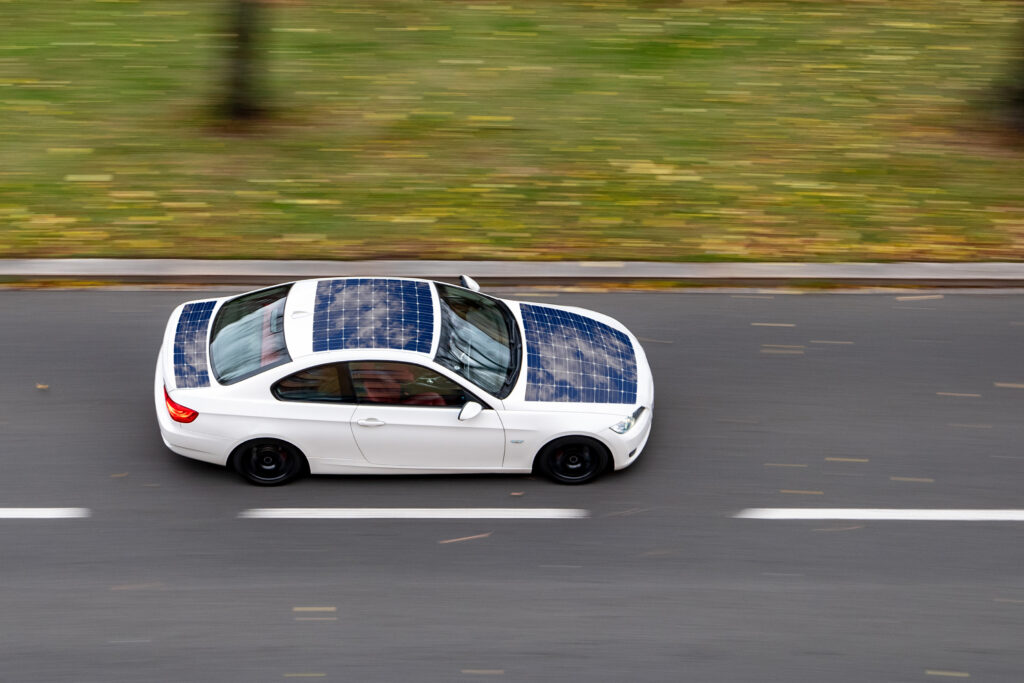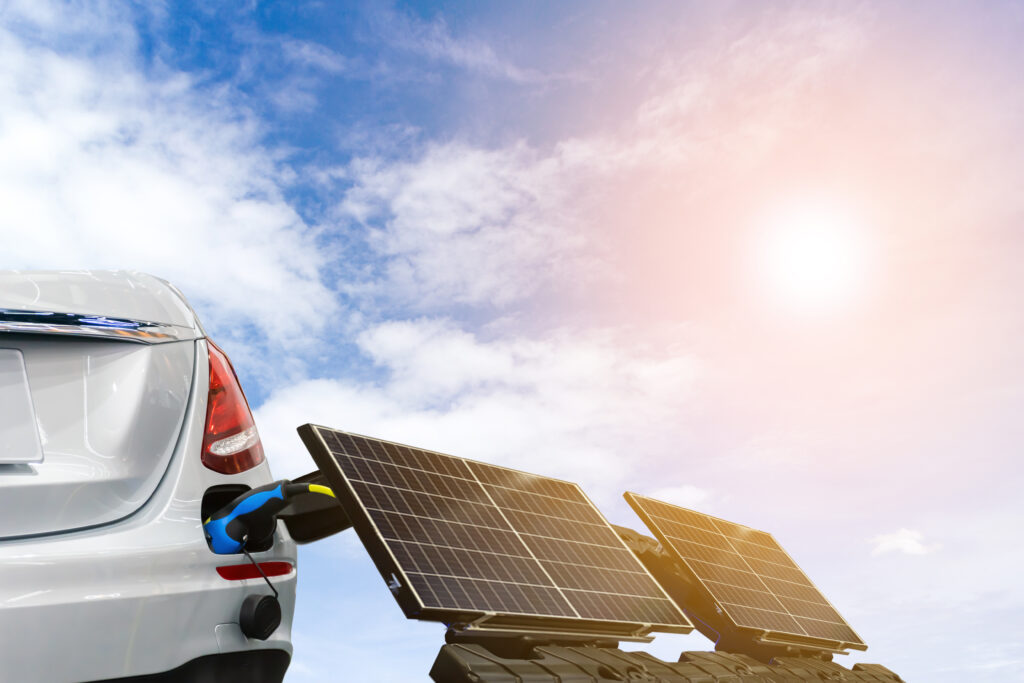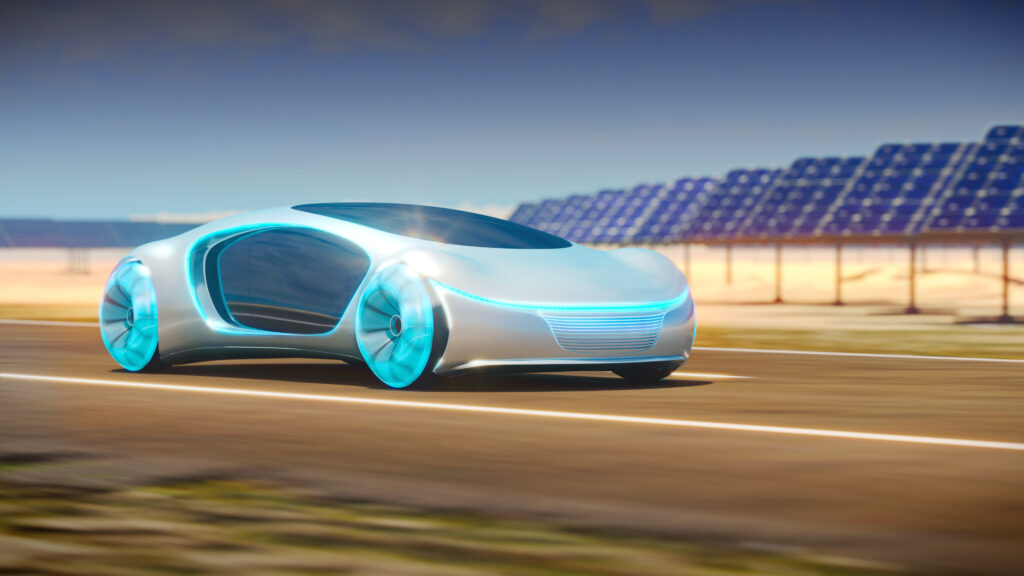Many car companies are currently working on solar-powered cars. But when they say “solar-powered,” they usually mean “electric cars with some bonus solar panels“. With advancements in solar panels in the next twenty years, these mostly-electric cars could become truly, 100% solar-powered cars.
Current Cars
Currently, the truly solar-powered car with the longest range is Lightyear One’s new car, which comes out in 2022. The lightyear.one website claims that maximum possible solar charge under complete solar irradiation is 12 km/hr, or 56 miles a day (whereas if you’re in the cloudy Netherlands, you might get 14 miles a day from solar charge). Fifty-six miles a day would be awesome for a normal day of commuting. But the minimum value of 14 miles would worry me.
Is there a way to get this range up to the more comfortable 200 miles of the electric Nissan LEAF?
Current Statistics: A Solar-Powered Car Not Possible Yet
According to the National Renewable Energy Laboratory (NREL), in 1975 the maximum solar panel efficiency was close to 21%. Today, only 45 years later, the maximum is closer to 47.1%. The 2017 International Technology Roadmap for PV predicted that the average efficiency of a commercial panel will increase from its 17% of today to at least 25% by 2027. If the trend continues, by 2038, the efficiency of a commercial panel would be increased to 35%.
In 1977, a watt of solar energy cost $76.67, whereas today, the price is $2.98. IRENA has predicted that by 2025, the price will have dropped by another 59%–to $1.80/watt. Similarly, the amount of power a solar cell can produce per unit area has increased as we’ve discovered new designs for the cells.
Future Statistics: But Possible Soon
The price of solar panels will continue to decrease and their efficiency will continue to increase at similar rates. We could be looking at solar panels with such a high efficiency that just enough cells to cover the roof could power the entire car. While the price for this maximum-efficiency panel is ridiculous right now, in twenty years, with advancements in the industrialization and commercialization of the cells, the price could very well be normalized.
So let’s push these trends forward and see if it is mathematically possible. Twenty years from now takes us to 2040, where efficiency of a commercial solar panel will be approximately 37%, and the cost will be about $0.60/watt. The roof of a small car has an area of about 54 square feet, which is the equivalent of 3.125 solar panels. Per solar panel, we would get 607 watts of power. The Nissan Leaf, the easiest-to-power car known to man, needs 6,000 watts of power at any given time, so we’d need 10 solar panels (but there’s only room for 3 on the roof–oh no!). (It would only cost $60,000, though, so that’s a plus.)
Here’s what a 100% solar-powered car would have to do in order to make this 37% efficiency to work.
Future Cars
With the current energy system (power density of 16.22 watts per square foot), requisite power to run a car (6,000 watts), and area of a car roof (54 square feet), we would need to achieve more than 100% efficiency in order to completely power the car. (That’s impossible, as in this house we obey the laws of thermodynamics.) If we want to achieve solar cars by 2040, we need to do one (or more) of three things:
- Increase the power density by a factor of 3.3333. Based on how much the power density has increased since the invention of the solar panel, this is possible.
- Decrease the requisite power to run a car by a factor of 3.3. Based on how much the power required to run a car has decreased, especially with the Nissan Leaf, this is also possible.
- Increase the area of the car roof by a factor of 3.3333, although this might look a little silly and would be dangerous to other cars on the road. More likely, the panels would be deployable while the car was parked so as to take up less area when the car was moving.
In 1975, it would have taken more than a hundred solar panels to run a car. Today, it would take about twelve. It can’t be that much longer until we can get it down to three, so that they can fit on the roof of the car and we can have a truly solar-powered car.
But for now, it’s a little out of our reach.
References
https://jalopnik.com/the-lightyear-one-solar-car-is-amazing-but-isnt-quite-w-1835853011
https://www.designnews.com/content/could-solar-powered-cars-become-practical/43791707861218
https://cleantechnica.com/2017/08/15/efficient-will-solar-pv-future-10-year-predictions-industry/
https://www.nrel.gov/pv/cell-efficiency.html
https://cleantechnica.com/2014/09/04/solar-panel-cost-trends-10-charts/



